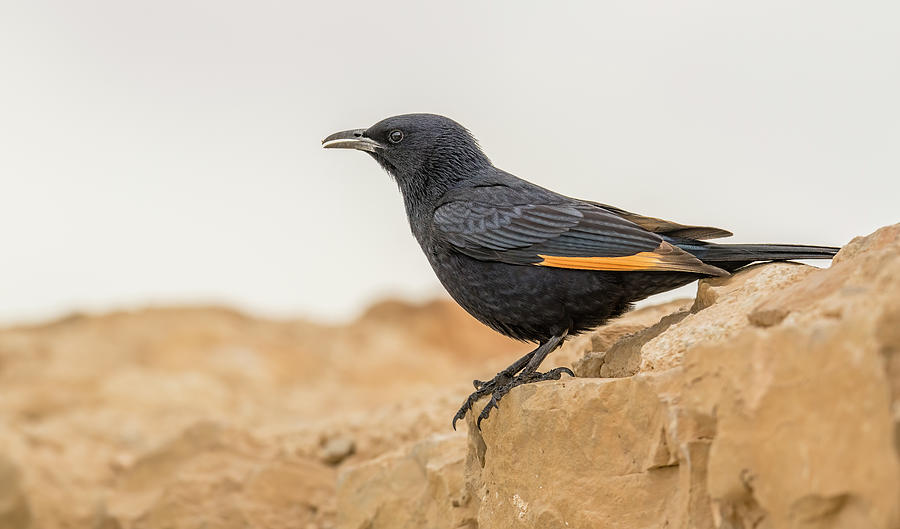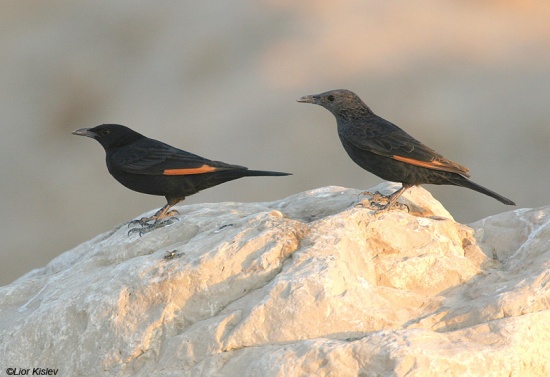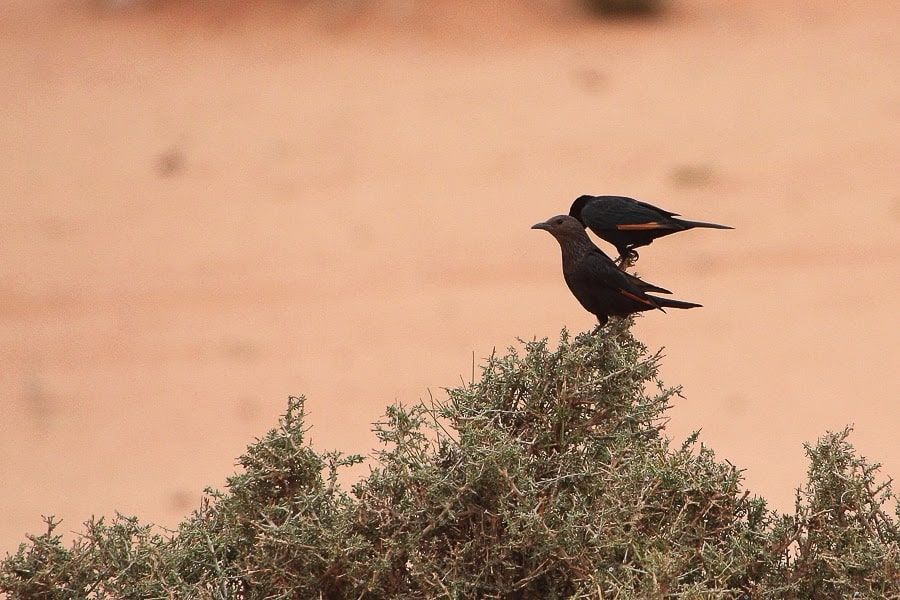Tristram’s Starling (Onychognathus tristramii) is a species of the genus Onychognathus, usually, this genus is found in Africa, but Tristram is the only one found out of Africa and he founds in the Middle East, this bird also known as Dead Sea starling or Tristram’s grackle.
In this article, we will know everything about this bird. and where is their habitat? Why are starlings called starlings?, How many species of starlings are there? how is their distribution? How do they survive in deserts where the temperature is high, How does Tristram’s Starling differ from other starling species? and what’s their breeding time?
Why are starlings called starlings?
they are called starlings due to their name’s etymology and historical origins, The word “starling” can be traced back to the Old English word “stærlinc” or “stare” which means “starling” or “star.” this because of the white points that show on its wings when they fly. By the way, I wanna tell you that starlings are from the Sturnidae family,
What is the habitat of Tristma’s Starling?

Actually, the origin of starlings is Africa, but Tristram is not like others, as it’s the only bird from this genus that lives outside of Africa. and it prefers to live in desert areas, wadis (dry riverbeds), rocky slopes, canyons, and cliffs.
Its range is very wide as it can find in mountainous areas, inland rocky terrains, and coastal cliffs. It loves to be in areas where sparse vegetation, rocky outcrops, and crevices because it’s collecting things from it to construct comfortable nests. and these areas are so suitable for it to live in as they provide a perfect suitable nest site that is so hard for wild animals to reach it. so it keeps it protected from danger.
I saw it one day in Saudi Arabi in a dry area where was there some dry and scattered herbs in the ground, and it was on a tree located on the mountain in its nest, it has incubated its eggs, and the male was so far for it, I think it was looking for some food to eat to come to the turn of the female to look for its food as well.
How has the distribution of Tristram’s Starling changed over time, if at all?
They don’t change their distribution a lot but they change it because of the weather changes, and food availability. As they set a period in a place when the sources of food are reduced they change it to look for another place where food sources are available.
the other reason why they change their places is referred of human activities near them, this bird doesn’t like to set in areas where humans are found. he doesn’t choose desert areas without a reason, it chooses these areas to be far away from humans.
What is the breeding season of Tristram’s starling?

Its breeding time can start early from March or April and extend into June or July. it chooses this time because the weather is starting to be warm and the availability of food. these factors are important to have a successful breeding.
When I was in Saudi Arabia it was lucky to me that I was in breeding time and see what happens there, I took a picture of a couple of these birds when they are setting together, and I saw some courtship displays.
How is their courtship displayed?

Birds also have courtship displays, just like us humans, they have also ceremonies and traditions of courtship before mating and the female courtship displays are as follows, they make sounds as they sing to the males and movements like dance as they wing-fluttering, and puff up of the plumage to showcase their vibrant colors and the males also engage in aerial acrobatics, swooping and diving to create an impressive spectacle to woo the females.
What is the nesting behavior of starlings?
Before starting to build nests they look first for a safe place, a place where no one can find their nests on it, and then both the male and female help each other to collect tree branches and some dry herbs to build a comfortable nest for their eggs.
Nesting Colonies:
Usually that I see these birds are social because they nest in large colonies and they go together in groups, these colonies are known as roosts or murmurations. I see in these colonies thousands of individuals. they set as a group to feel protected from wild animals.
Nest Reuse:
These birds build their nests one time and still use them for a long time, each year when the nest is told they rarely build a new one, it must time they only reprepare the old one and put their eggs again.
Competition for Nest Sites:
During nesting season starlings find very high competition for the nest sites between each other, or with birds, for this, they get into aggressive conflicts with the strong one who will build his nest in the chosen place. and sometimes after building the nest when they go to bring food, they go back and find their nest colonized by another bird. that’s so funny to us hahaha but it’s not funny to them.
What is the incubation period for starling eggs?
Starlings are renowned for their remarkable reproductive behavior. During the enchanting mid-April, a time when nature awakens, these avian creatures engage in a synchronized dance of procreation. It is during this period that starlings as if guided by a celestial symphony, lay a prodigious clutch of 4 to 6 eggs. A captivating spectacle unfolds as all members of a colony, moved by a shared instinct, commence their egg-laying endeavor within a span of mere days.
As the fragile eggs rest nestled within the warmth of the nest, a dedicated caretaker emerges—the female starling. With unwavering commitment, she assumes the arduous task of incubation, tending to her precious offspring with tender love. Twelve days shall pass, marked by anticipation and maternal vigilance, until the delicate shells give way to new life. The chicks, breaking free from their fragile confines, embark upon their journey in this vast and vibrant world.
Yet, amid this spectacle of nature’s miracle, challenges inevitably arise. Many a hopeful endeavor is met with disappointment, for infertility casts its shadow over the starlings’ nesting ventures. The dreams of future generations lie shattered, with empty shells as a poignant reminder of unfulfilled potential. And even for those fortunate enough to emerge from their embryonic sanctuary, hunger looms ominously. Starvation, a cruel adversary, seeks to quell the flickering flame of life, threatening to extinguish it prematurely.

